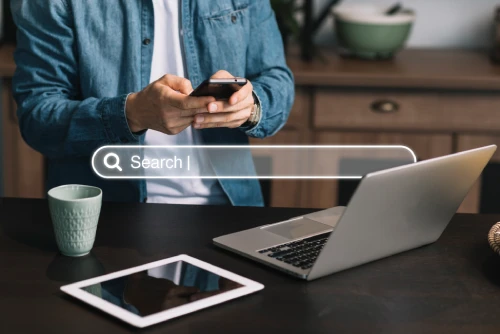
Google, as the leading search engine, wields considerable influence over website traffic. As a website owner or digital marketer, understanding how to improve your website’s ranking on Google is essential. In this article, we will explore five actionable tips that can help you rank your website on the first page of Google.
1. High-Quality and Relevant Content
When it comes to ranking on Google, content is king. Producing high-quality, relevant, and engaging content is essential for improving your website’s visibility. Google’s algorithms are designed to prioritize websites that provide valuable information to users. To rank on the first page, create content that addresses the needs and interests of your target audience.
Why is high-quality content important?
When it comes to ranking on Google, content is king. Producing high-quality, relevant, and engaging content is essential for improving your website’s visibility. Google’s algorithms are designed to prioritize websites that provide valuable information to users. To rank on the first page, create content that addresses the needs and interests of your target audience.
How can you create high-quality content?
Before you start writing any content, it’s important to understand who you’re writing for. What are their interests? What are their pain points? What are they searching for online? Once you have a good understanding of your target audience, you can start to create content that they’ll find relevant and helpful.
2. On-Page Optimization
On-page optimization is the process of improving the visibility of your website in search engine results pages (SERPs) by optimizing various elements on your website. By optimizing these elements, you can send signals to Google that your website is relevant and valuable for specific search queries.
What are the key elements of on-page optimization?
Title Tags: Craft compelling and keyword-rich title tags for each page of your website. These tags are the text that appears at the top of your browser tab and in search engine results pages.
Meta Descriptions: Write concise and persuasive meta descriptions that provide a summary of your page’s content. Include the primary keyword naturally.
URL Structure: Clean and descriptive URLs are easy to read and understand. Avoid using long and complex URLs.
Header Tags: Header tags are numbered from H1 to H6, with H1 being the most important and H6 being the least important. The number of the header tag indicates its importance, so H1 is used for the main heading of the page, H2 is used for subheadings, and so on.
Keyword Optimization: By using your primary and LSI keywords throughout your content naturally, you can improve your page’s ranking for those keywords. However, it is important to avoid keyword stuffing, as this can harm your ranking.
Image Optimization: Compressing images is the process of reducing the file size of an image without sacrificing its quality. Also, it improves page load speed.
Internal and External Linking: By including internal links and external links to authoritative sources, you can improve the SEO and user experience of your website.
3. Mobile-Friendly Websites
Google prioritizes mobile-friendly websites in its search results because the majority of internet users access websites through mobile devices. This means that if your website is not mobile-friendly, it is less likely to appear in search results, and you will miss out on potential visitors.
Why is a mobile-friendly website important for ranking?
Google’s algorithms consider the user experience as a ranking factor. If your website is not optimized for mobile devices, it can result in a high bounce rate, lower engagement, and reduced visibility on search results.
How can you ensure your website is mobile-friendly?
- Use a responsive web design that automatically adjusts the layout to fit different screen sizes.
- Make sure your website loads quickly on mobile devices by optimizing its speed.
- Ensure text is easily readable without zooming.
- Implement touch-friendly elements and navigation menus.
- Test your website’s mobile-friendliness using Google’s Mobile-Friendly Test tool.
4. Technical SEO Optimization
How can you ensure your website is mobile-friendly?
While high-quality content and on-page optimization are crucial, technical SEO optimization plays a significant role in determining your website’s ranking on Google. Technical SEO is the process of optimizing the technical aspects of your website to make it easier for search engines to crawl and index your content.
Technical SEO factors
Website Speed: Optimize your website’s loading speed by compressing images, minifying code, and leveraging caching techniques.
XML Sitemap: Create and submit an XML sitemap to Google to help search engines understand the structure and content of your website.
Robots.txt: Utilize a robots.txt file to instruct search engine crawlers on which pages to crawl and index.
SSL Certificate: Secure your website with an SSL certificate to establish trust and encrypt data transmission.
Structured Data Markup: Implement structured data markup (e.g., Schema.org) to provide additional context to search engines about your content.
5. Backlink Building
Backlinks, commonly referred to as inbound links, encompass the links originating from external websites that guide users towards your own website. Google considers backlinks as votes of confidence from other reputable websites, indicating the quality and authority of your content.
Why are backlinks important for ranking?
Backlinks are a vital off-page ranking factor. Websites with a high number of quality backlinks tend to rank higher in search results, as they are perceived as more trustworthy and authoritative.
How can you build backlinks?
- Create high-quality content that is informative and engaging, and that will naturally attract backlinks from other websites. You can also guest blog on reputable websites in your industry and include a link back to your website.
- Engage in influencer outreach to collaborate on content and obtain backlinks.
- Leverage social media platforms to share your content and encourage backlinks.
- Monitor your backlink profile using tools like Ahrefs or Moz to identify and disavow toxic or spammy links.
